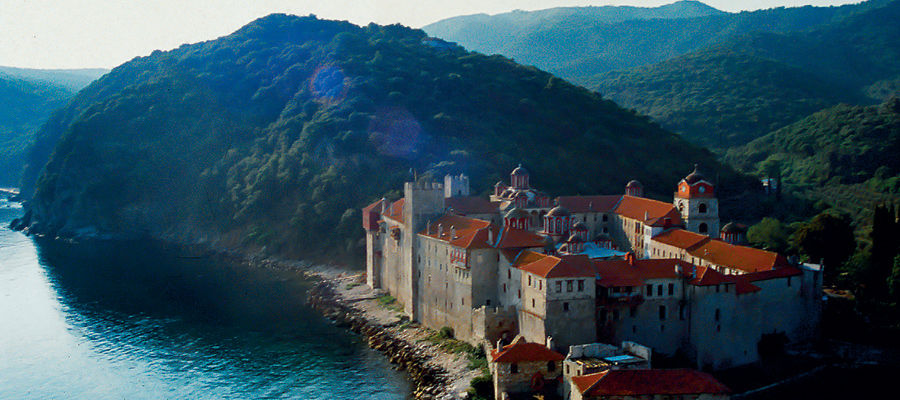Esfigmenou monastery
It is washed by the waters of Strimonikos bay for years, in the northeastern shores of the Athonite peninsula, 3km from Hilandariou. Its existence is dated at the end of 10th century, with the report that in 998 Theodoros was its Abbot. There is also a written report of the monastery in 1045, in the “Typiko” of Constantine Monomachos.
Its original name was Esfagmenou, probably because Jesus was sacrificed as a Lamb of God, for the salvation of the world. It declined during the 11th century and owned many properties in the Athonite peninsula. During that time, it housed Armenian monks, among which was Theoktistos, who became Abbot in 1030, and “First” in Athos, later. The 14th century was the peak of prosperity, when the fraternity had 200 people, and its wealth totaled 1.200 modius (type of measure for grain). Athanasios A, the Patriarch of Constantinople and Gregory Palamas as an Abbot (1335-36) who attempted to introduce Hesyhasm lived as ascetics in its cells.
Monks used to go fishing systematically using the traditional “taliani” and “thini”. Agarian pirates were also found in the sea though, who pillaged the monastery repeatedly, with the 1534 arson as a climax. In general, the history of the monastery after the occupation of Athos by the Ottomans remains unknown. In May of 1821, Emmanouil Pappas disembarked in its arsana (harbor) bringing the message of revolution, with its conversion to a Turkish camp until 1832 as a result.
The eight-domed Catholicon celebrates the Ascension of Christ. It was rebuilt in 1808 and the opening took place in 1811 with the presence of the benefactor, Gregory V. A special feature is its wood-carved, gold-plated “iconostasio” (icon‐screen) of 1813, and the curtain in the Beautiful Gate, which came from the military tent of Napoleon. Benjamin, Zacharias and Makarios who came from Galatsi of Romania made the frescoes in 1818.
Text: Dr. Antonios G. Dikaios/ Theologian – Environmentalist.






